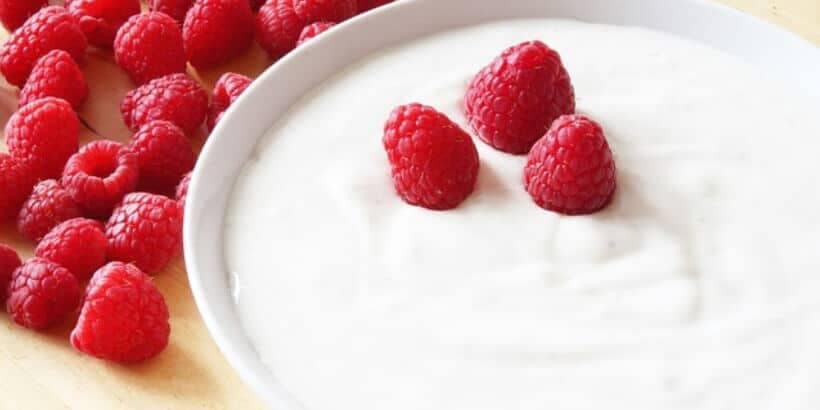Simple, Greek-Style Yogurt

Looking for a simply & healthy snack to make this spring? These tips will help you whip up a delicious Greek-style yogurt with ease.
The following excerpt is from Keeping a Family Cow by Joann S. Grohman. It has been adapted for the web.
Making Yogurt
Milk from a high-milk-solids breed such as the Jersey makes the best yogurt. Use whole milk and you’ll get a little “frosting” of yogurty cream on top. I often make mine in eight-ounce ceramic pots, glass jelly jars, or coffee mugs. Sometimes I just fill a large pan with milk.

The important point is that the milk must be between 90°F and 115°F to make yogurt.
So you can scald your milk, then let it cool to this temperature, or if you don’t want to destroy the probiotics in raw milk, you can simply warm your milk to this temperature.
Yogurt Starter
For yogurt starter, for every two quarts of milk, use about one-quarter cup (no more; the organisms don’t like to be crowded) of your last batch of yogurt or of a first-class brand of fresh plain yogurt, or use a commercial starter and follow the packet directions.
When your milk is warm, add the starter, and stir it in gently but thoroughly with a very clean spoon. Pre-warm the vessels in which you plan to set your yogurt, then pour or ladle it in and cover them.
Find a spot in your home that will keep the yogurt cozy, without allowing it to fall below 90 ̊F or heat it above 115°F. It is worth a bit of trouble to find the ideal spot for incubating your yogurt.
Once you hit on the successful combination of container and heat source, you can make yogurt quickly and easily, without having to give it much thought.
The incubation should take about four hours. Try not to jiggle the yogurt while it is setting or it will be runny.
If your yogurt is not as thick as you would like, there are several things you can do about it.
To begin, note that raw milk yogurt tends to be less firm. To firm it up a bit, you can let it sit longer, or you can obtain fresh starter. Using a larger amount of starter is unlikely to be helpful. The yogurt organisms prefer not to be crowded. Do be sure to mix thoroughly.
I usually make yogurt in one big pot and ladle out the whey as it accumulates. This has the effect of thickening the yogurt. You can make Greek-style yogurt by draining the whole batch of yogurt through a wet linen tea towel to remove some of the whey.
Recommended Reads
Recent Articles
The Garlic Clove! This small crop adds a big punch of flavor that complements almost every delicious dish you could think of. And the best part? These two recipes are a breeze to make together!
Read MoreOur love affair with amaranth began long before the pseudo-grain became a trendy staple for gluten-free folk. The luscious leaves of this annual plant are not only packed with a plethora of health benefits.
Read MoreDon’t know where to start for foraging wild plants? Read on for the information you need to begin foraging on your own: where to do it and how to be safe.
Read MoreEasy rainbow coleslaw! Transform your salad game with this colorful recipe. It is surprisingly packed with flavor and is a great addition to your repertoire.
Read MoreIf you love tomatoes, you probably already know just how many varieties of these summertime staples there are. But do you know what makes each one unique?
Read More








